Henry Melcher reports for The Architect’s Newspaper: COME HELL OR HIGH WATER. BIG, SCAPE, Penn Design/OLIN, OMA, MIT, and Interboro win HUD’s resiliency competition, Rebuild by Design.
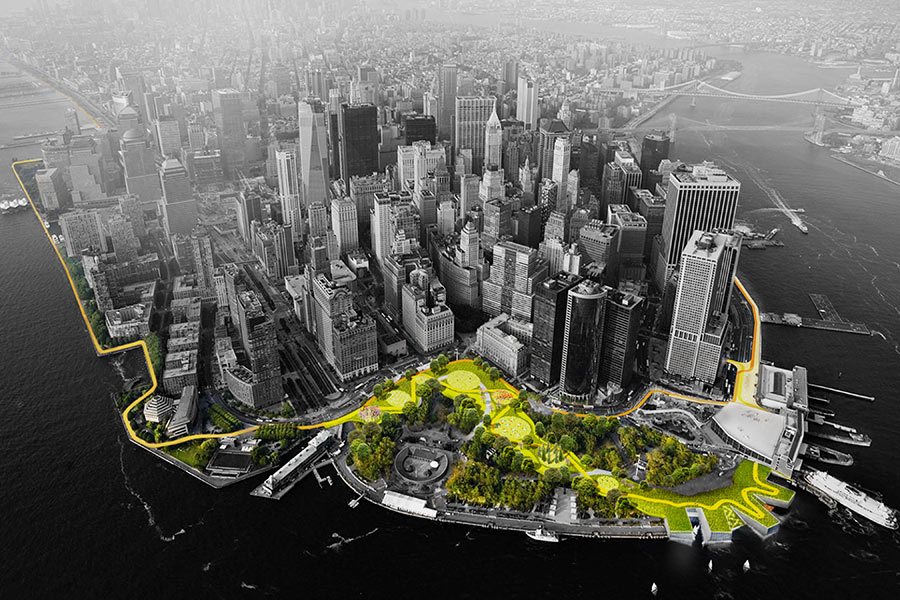
At the Jacob Riis Houses, New York City Mayor Bill de Blasio, Senator Chuck Schumer, Governor Andrew Cuomo, HUD Secretary Shaun Donovan, and Zia Khan of the Rockefeller Foundation announced that hundreds of millions of dollars are in place to implement BIG’s berm for Lower Manhattan, Scape’s living breakwaters off Staten Island, Penn Design/OLIN’s resiliency upgrades for the South Bronx, and Interboro’s strategies to protect Nassau County.
Later in the day, in Little Field, New Jersey, Secretary Donovan and Governor Chris Christie revealed that MIT’s plans for new parkland in the Meadowlands and OMA’s comprehensive flood protection system for Hoboken would also receive federal funds.
These six winning teams are out of an initial 148 who entered the competition last summer.
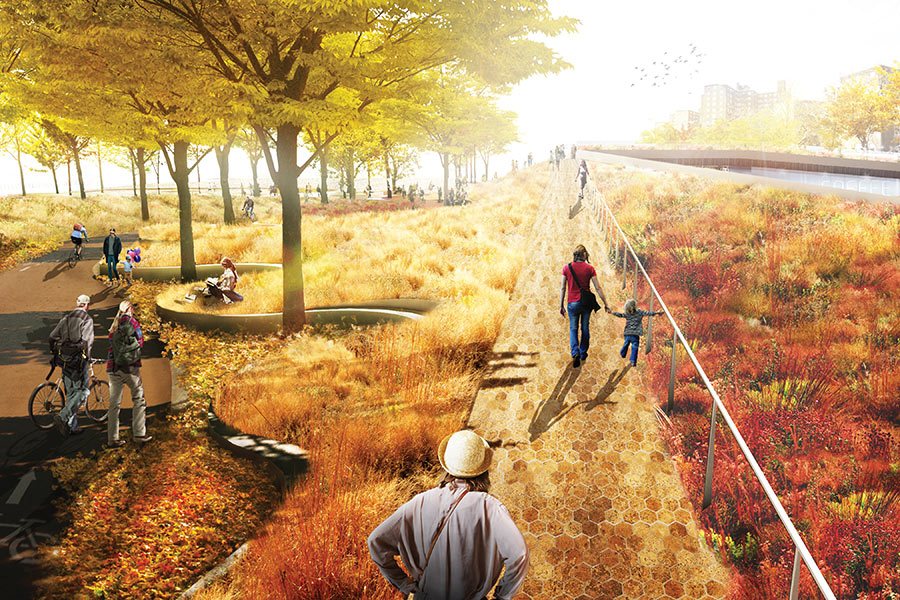 |
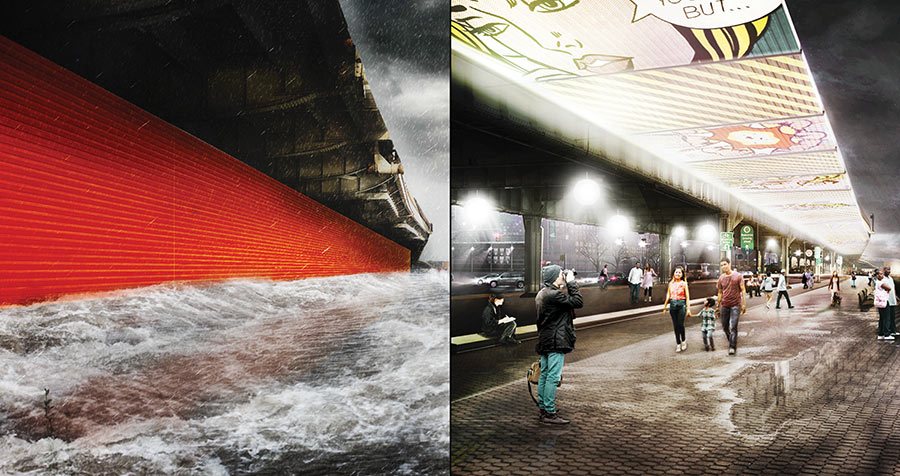 |
BIG’S PLAN PROTECTS MANHATTAN WITH A LANDSCAPED BERM. SEE MORE OF THEIR PROPOSAL HERE.
“Implementing these proposals is morally the right thing to do because they will save lives,” said Secretary Donovan at the day’s first announcement. “But it also makes economic sense because for every dollar that we spend today on hazard mitigation, we save at least four dollars the next time disaster strikes.”
While the design and implementation specifics of each plan have not been finalized, the investment in these proposals is significant: $355 million for New York City, $185 million for New York State, and $380 million for New Jersey. The money comes out of HUD’s Community Development Block Grant program and is in addition to the billions of dollars already being spent on resiliency projects led by the Army Corps of Engineers and FEMA.
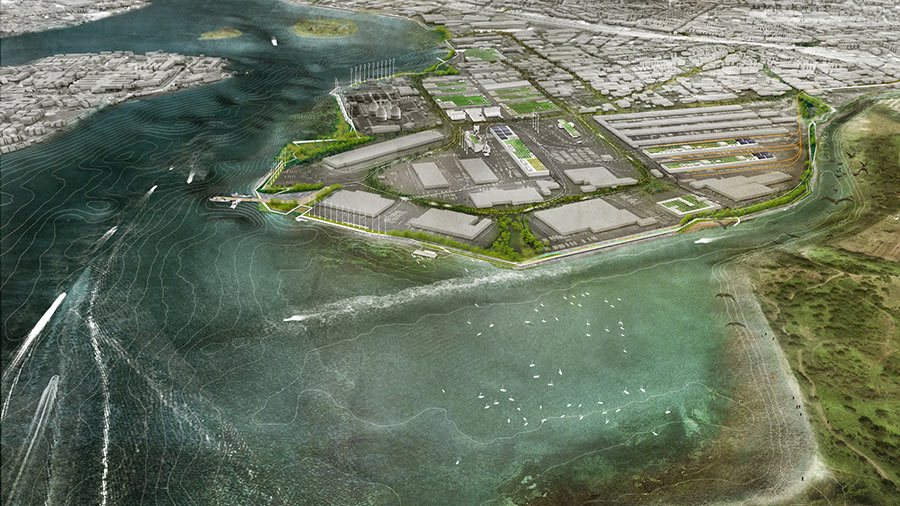 |
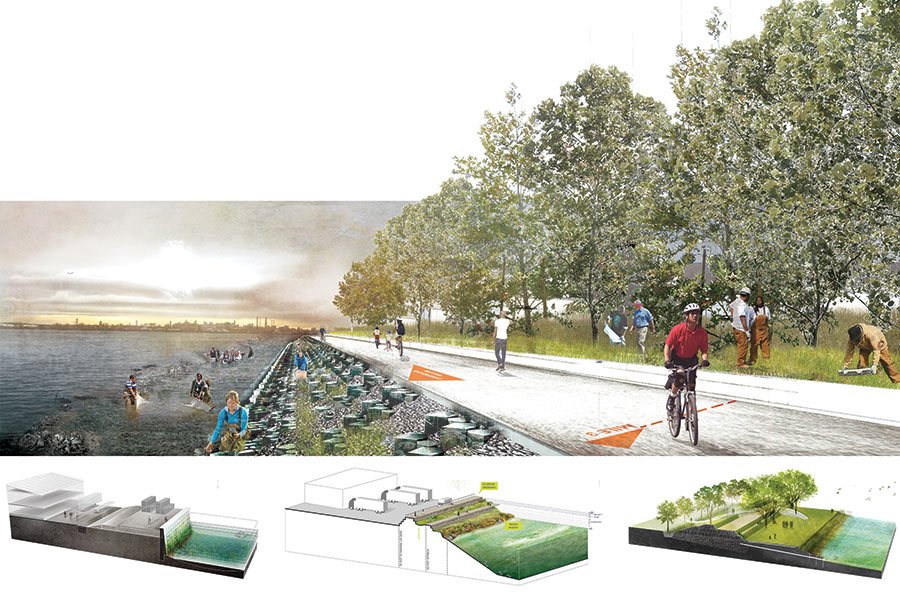 |
A TEAM HEADED BY OLIN AND PENNDESIGN CALLED FOR “INTEGRATED STORM PROTECTION AND GREEN INFRASTRUCTURE). SEE MORE OF THE PROPOSAL HERE.
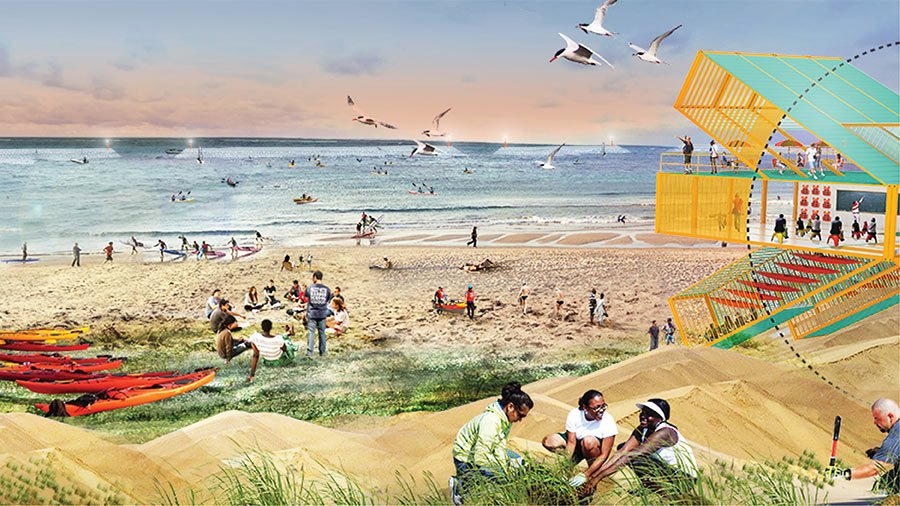 |
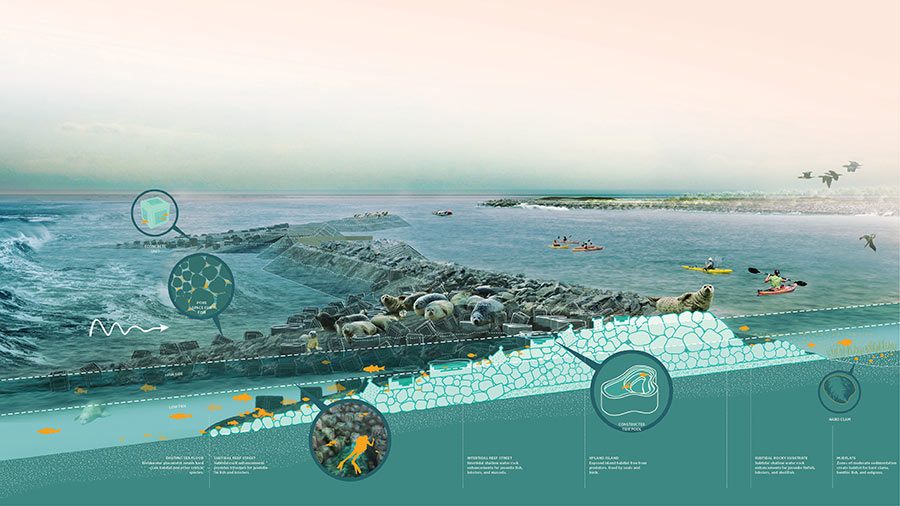 |
A KEY COMPONENT OF SCAPE’S PROPOSAL WAS LIVING BREAKWATERS. SEE MORE OF THE PROPOSAL HERE.
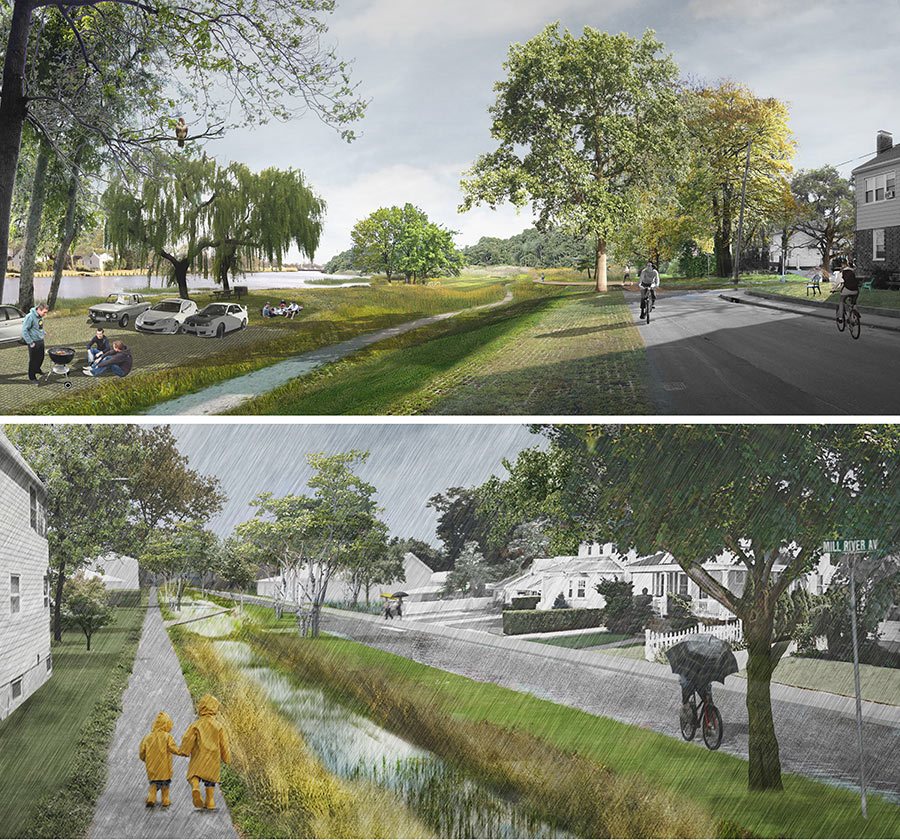 |
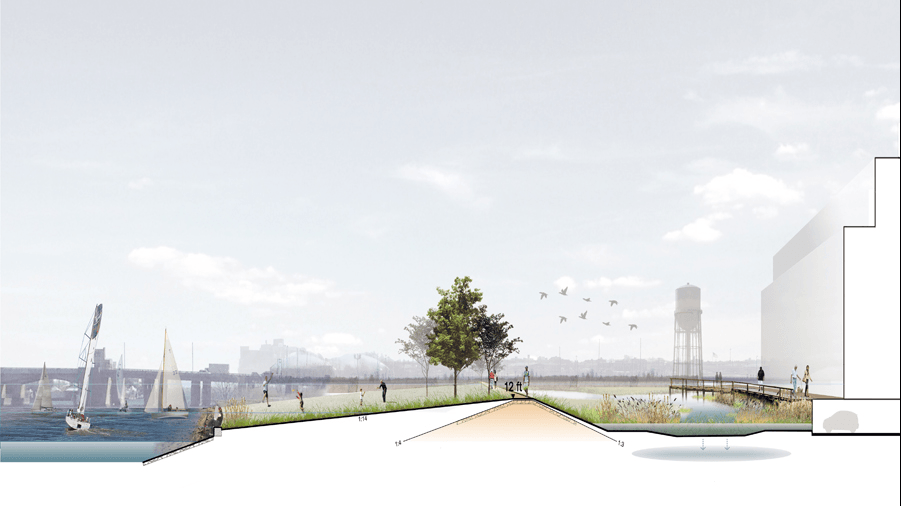 |
INTERBORO’S PROPOSAL CALLED FOR GREEN-BLUE CORRIDORS SEE MORE OF THE PROPOSAL HERE.
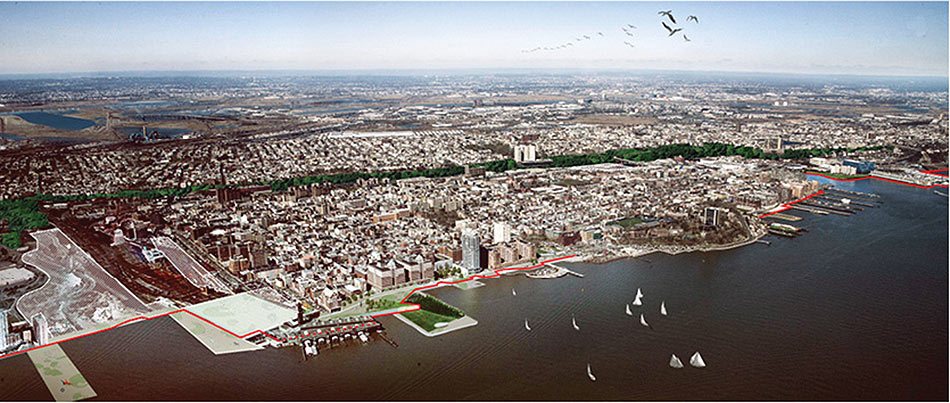 |
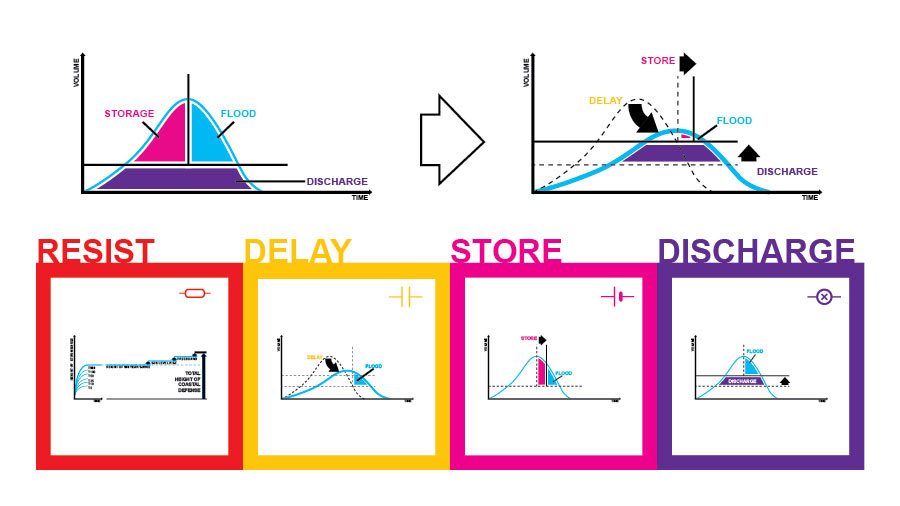 |
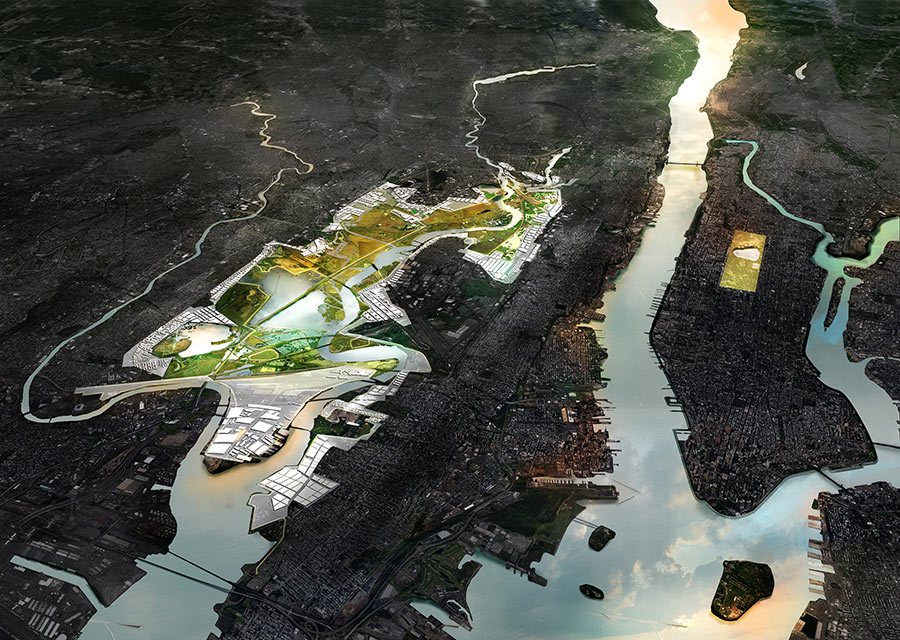 |
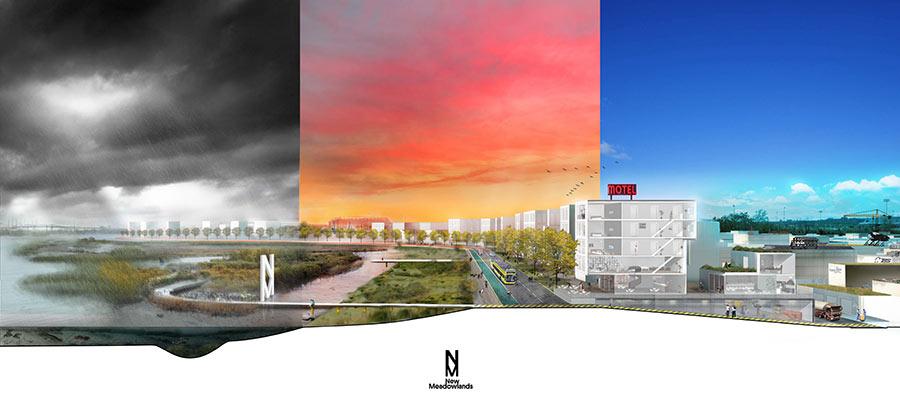 |
THE PROPOSAL FROM A TEAM LED BY MIT PROPOSED NEW PARKLAND. SEE MORE OF THE PROPOSAL HERE.
Secretary Donovan said that the winning projects were chosen not just for their feasibility, but because they could best serve as models of resiliency for other vulnerable parts other country.



